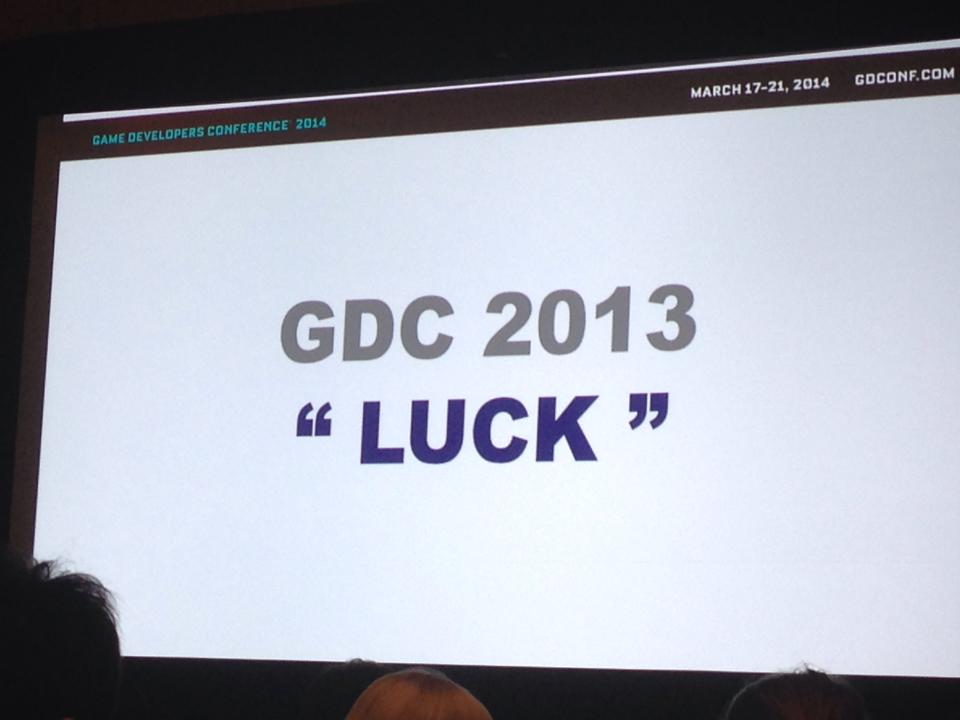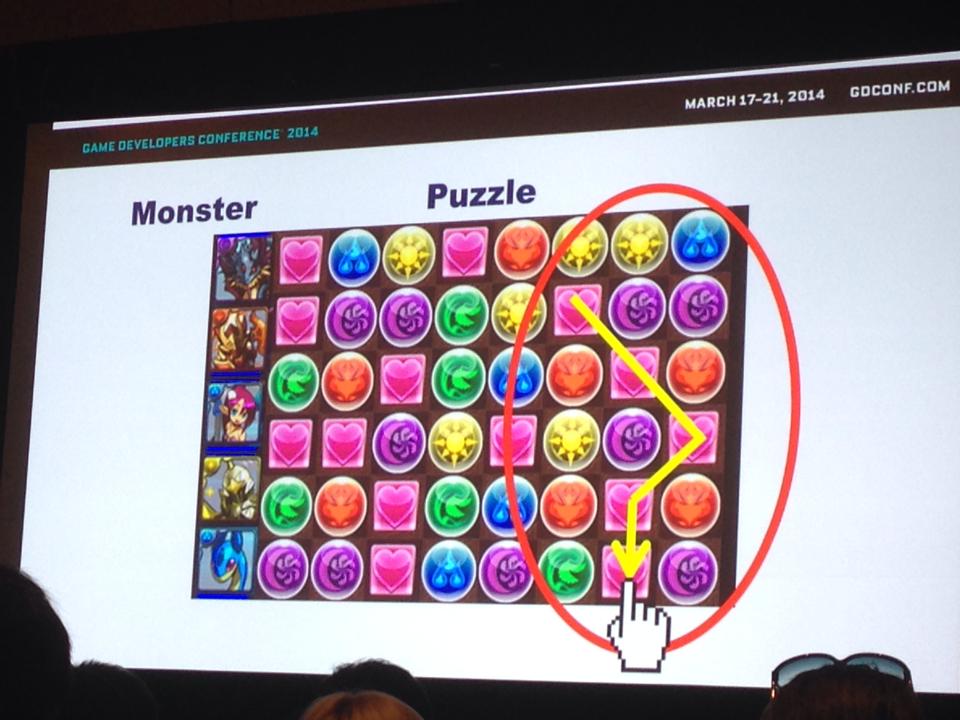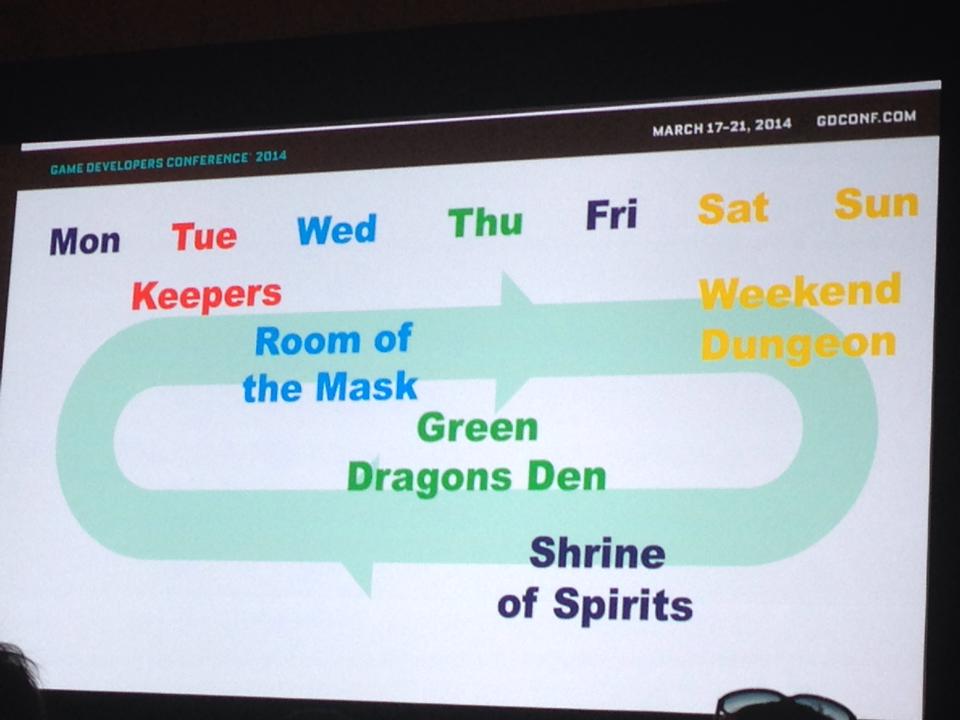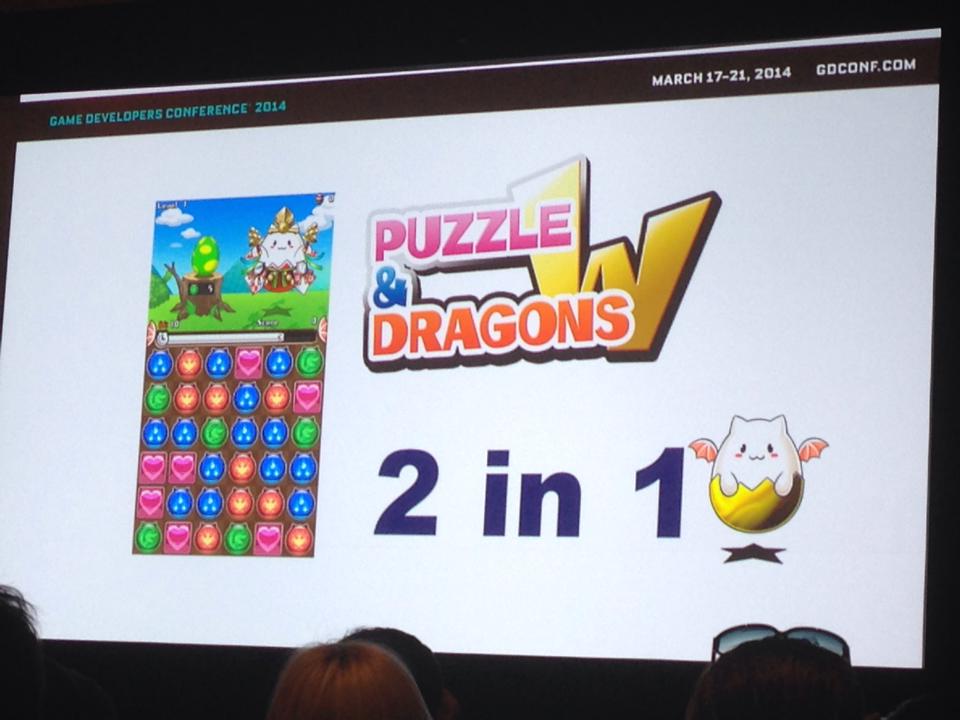GDC 2014: Post-Mortem Puzzle & Dragons
During the Game Developers Conference in San Francisco, Kazuki Morishita, President and CEO of GungHo, spoke about the creation of Puzzle & Dragons.
About the report
Kazuki’s Puzzle & Dragons Postmortem report is, in fact, a continuation of his own report from last year’s GDC. In 2013, for the first 20 minutes, he told them that their success was luck, that GungHo did not know how they did it and how it could be repeated: they had been developing for many years and suddenly got lucky in a big way.
It sounded honest, but it looked very strange from the outside. Imagine: a huge hall filled with developers, and a speaker on stage repeats “it’s all about luck.” The question is, why then the report?
Judging by the current report, Kazuki explained that telling the truth publicly is not good for business. Therefore, the main general idea of his report at GDC 2014 was “instinct”.
They say they are industry veterans, their experience on a subconscious level allows them to make hits, be successful, earn a lot of money.
Here, by the way, are the concert figures:
- 4 out of 6 games companies earn $1 million per month;
- Puzzle & Dragons Earns $100 million;
- 25 million downloads of the game out of 30 million downloads is Japan.
Based on the last point, we can conclude that Puzzle & Dragons has not become a super hit outside Japan.
How was the development going?
The game was initially made by two people.
Initially, the controls in the game were very similar to those found in Jelly Splash and I Need A Hero, but in the horizontal version. But it was abandoned, because in Japan, users can stand in the subway for more than an hour, holding on to the handrail with one hand and holding on to their smartphone with the other. They play with their thumb. In other words, making a horizontal Match-3 on the whole screen was not the most successful solution.
As a result, the controls in the game were redone 4 times.
There was an idea to make a combat system – one-in-one classic Match-3.
It turned out boring.
Added the ability to change the stones horizontally – it’s better, but still not enough action.
So they came to the idea that they should be allowed to move the pebbles as far as they want.
The idea was rejected at first: they were afraid that with such mechanics in the game it would be too easy to generate numerous combinations. However, they returned to her later anyway. The problem with the combinations was solved by setting a timer (4 seconds are given for a move).
The timer also increased the possibility of misklik. Thanks to this, the action in the game has become more dynamic.
The first steps after the release
Kazuki claims that they did not spend any money on promotion at the launch of the project at all. Everything was growing at a tremendous speed by itself. On the third day after the release, the project was in first place in the box office top.
When there was explosive growth, and the game servers were lying and the game was unavailable – GungHo massively distributed currency. They were afraid that incomes would fall, but after that they only grew. After that, it became common practice in Japan (and, consider, the USA) to distribute hard currency after the servers fell.
Lessons
The director of GungHo, on the one hand, claims that the project even two years after the release has a high ARPU (which one, he did not name), on the other hand, he repeated a couple of times that they in the company are afraid of too much revenue from users. When ARPU exceeds a certain maximum, they try to lower it by giving away free items. The fact is that after paying a lot, the user can leave the game. The company, in turn, is more profitable to collect a large amount from the user more than once, with a little less, but many times.
The main problem that is still relevant for the game is the rapid burning of content.
One of the solutions was the creation of daily dungeons.
In other words, there is a schedule according to which, for example, on Tuesday users have access to dungeons that give evolution maps, and on weekends – to dungeons where there is a lot of gold.
This prevents content from burning very quickly, increases user retention in the game, and also sets the game a certain rhythm.
Kazuki claims that after they implemented this feature, it became the standard in Japanese games.
What’s next?
GungHo takes the adaptation of the game to each specific market very seriously. They create a separate team of operators for each region. Because of this, the game is still only available in 13 countries. But Kazuki claims it’s worth it.
Their new game Puzzle & Dragons W will be released in the spring. It is designed for a more casual audience. GungHo plans to launch it right inside the original Puzzle & Dragons.
GungHo also plans to build the Puzzle & Dragons brand. She has already released an arcade game, a 3DS game and comics based on the mobile project.
Text and photo: Denis Voikhansky, Head of Alis Games






